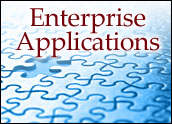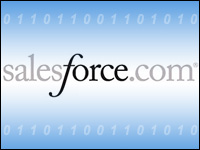
Unica has introduced a new version of its marketing resource management platform, Affinium Plan 7.3.
Though it is a point release, some of Version 7.3’s new functionality is new to the industry as well.
For example, its new Marketing Objects feature allows marketers to digitally store and reuse marketing information that other MRM (marketing resource management) applications cannot capture.
“It takes away the dependence of direct marketers on spreadsheets,” Suresh Vittal, a senior analyst at Forrester Research, told CRM Buyer.
What is new is the ability to dynamically define the object, he added. “Reusability has existed at the level of digital objects, such as with creative files. But to be able to indicate that a certain material or object is something that will be reused is remarkable.”
From Product Specs to Handwritten Notes
Examples of objects that can be difficult to capture and thus reused in an MRM application include, according to Unica, audience definitions for ads, production specifications for direct-mail pieces or descriptions of event venues.
These are captured as fields in spreadsheets, separate word processing files or — nightmare scenario — in the form of handwritten notes.
This information is not easily transferred from one project to another. Therefore, users must rekey it as well as maintain the original separate file.
Because Marketing Objects captures this data from one project as an “object,” it can be reused on other projects.
“It has not been possible before to take this level of information from a project or campaign, capture and store it and then manage it like you would any other digital asset,” Alan Bunce, senior product marketing manager at Unica, told CRM Buyer.
Prior to the release of Plan 7.3, the application handled these assets much the same as other MRM systems. “If a marketer wanted to reuse a piece of work, it would have to create a template for the project or campaign, but it couldn’t reuse the actual information,” Bunce said.
“With the expanded capabilities provided by Marketing Objects, marketers can easily store and reuse previously approved data for quick assembly and response to changes in customer behavior,” explained Lianne Bridges, president of consulting service Bridges Horizon.
“This new functionality not only supports the way marketers work, vertically within a specific project or campaign, but how they view content — horizontally across campaigns. It allows marketers to reach a new level of efficiency and effectiveness in their marketing programs,” Bridges noted.
The new feature is significant for Unica’s corporate development as well. “This is a major release for them — Unica’s vision for marketing resource management has not always been at the forefront of the industry,” concluded Forrester’s Vittal.
What Else Is New?
Other features cement Vittal’s view that Affinium Plan 7.3 is a big leap forward in functionality.
For instance, a new integration module comprised of a set of APIs (application programming interfaces) allows users to integrate Affinium Plan with other enterprise systems.
“This is important because, increasingly, marketing must be able to tie into ERP (enterprise resource planning) systems in order to be measured by enterprise-wide metrics,” Vittal said.
Other features include Team Task Queue Management, which supports marketing organizations that employ a service-bureau type of operation.
In this scenario, project managers and traffic managers do not assign tasks to individuals, but instead assign them to teams and let the team managers determine who will do the work.
Usability enhancements include flexible list viewing options, role-based menus and more advanced searching capabilities.























































